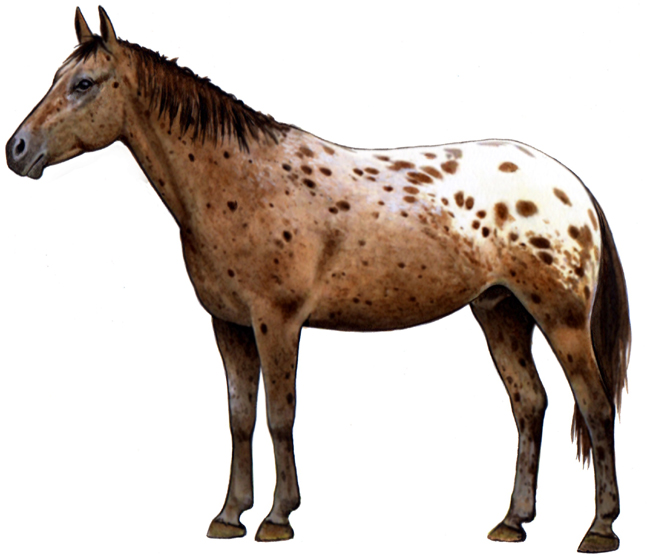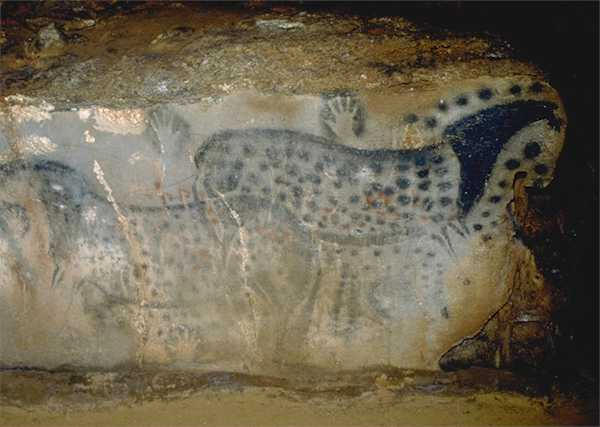|
|
| Tiger Horse |
 |
|
The term
"tiger" suggests stripes and these horses don't have them.
They are characterized by leopard-like spots. |
 |
|
Cave painting at
Pech-Merle, France from the Upper Paliolithic era. |
Pictures of "leopard
horses" have been found in prehistoric caves and they were popular
in Holland, Germany, Denmark, France and Austria during ancient
times. The Spanish had no word for leopard, so they referred to them
as "tiger horses," as the word "tiger" referred to any animal with
distinctive patterns. In Spain, the most prized tiger horse
was the Jennet. Large numbers of them them were shipped to the
American colonies during the 1600s.
The Ni Mee Poo or Nez Perce are a tribe of Native Americans
whose territory then consisted of large parts of what are now the
states of Washington, Oregon and Idaho. They acquired horses around
1700 and became selective breeders, something fairly unique among
the north American tribes. Some hundred years later, they were
visited by the Lewis and Clark Expedition in 1804. Merriweather
Lewis wrote a rather detailed description of their unique spotted
horses in his journal.
In 1887, a war between the Nez Perce and the U.S. army resulted in
many of their horses being shipped east. Others seem to have been
scattered across the many tribes of the Pacific Northwest. In
1938, Claude Thompson, an Oregon farmer, established a register to
preserved the spotted horses. |
Image
copyright Feenixx Publishing.
All right reserved. May not be used without prior written consent. |
|